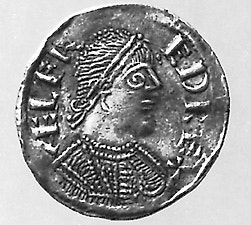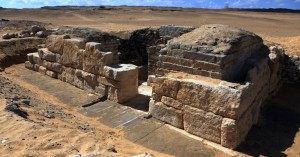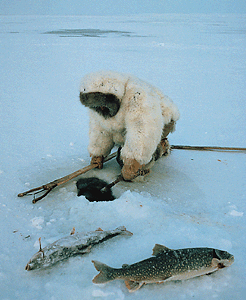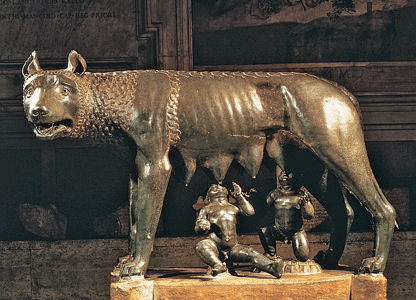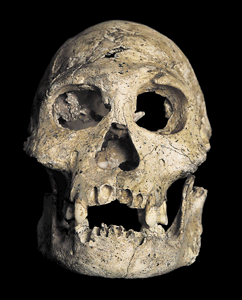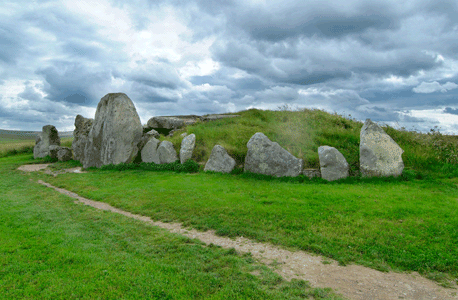The Maya Snake Dynasty
Thursday, September 1st, 2016September 1, 2016
Stone panels decorating a newly discovered tomb tell the fascinating story of the rise and fall of a family of powerful kings known as the “Snake Dynasty” in the civilization of the ancient Maya. Archaeologist Jaime Awe of Northern Arizona University and his colleagues discovered the 1,300-year-old tomb this summer at Xunantunich (SHOO nahn TOO nitch), an important Maya ceremonial and administrative city on the Mopan River in what is now Belize. The tomb, one of the largest Maya tombs ever discovered, held the skeleton of an adult male, who was probably a member of a royal family.
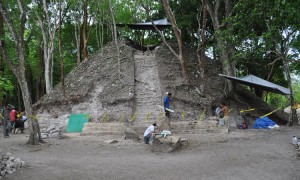
Archaeologists work at the pyramidal temple that hid the discovered tomb at Xunantunich, Belize. Credit: © Jaime Awe, Belize Institute of Archaeology/Northern Arizona University
The Maya developed a magnificent civilization in Central America and southern Mexico that reached its period of greatest development about A.D. 250 to 900. During that time, known as the Classic Period, Maya civilization was centered in the tropical forest of what is now northern Guatemala. Each Maya city governed its surrounding area, and some large cities controlled one or more smaller cities. A king would usually be succeeded by his younger brother or by his son. In some cases, modern scholars know of important Maya dynasties, single families that ruled for generations.
Dr. Awe and his Belizean colleagues discovered the tomb buried under more than 25 feet (8 meters) of debris and rubble that had accumulated over centuries to fill a stairway leading down from one of the Maya city’s temples. Inside, they found the skeleton of a male, probably between 25 and 30 years of age. Grave goods around the skeleton indicated that the person buried was of high social status. The bones of jaguar and deer were placed around the skeleton, along with ceramic bowls and a number of obsidian (volcanic glass) blades. Two niches (hollows) in the walls of the tomb contained many pieces of flint that were cut into the shape of animals, leaves, and other symbols.
But the most interesting artifacts in the tomb were a pair of stone panels engraved with Maya hieroglyphics. The researchers believe the panels were originally part of series erected along a grand stairway at the ancient Maya city of Caracol, about 26 miles (42 kilometers) south of Xunantunich. Scholars believe the panels were ordered by K’an II, the king of Caracol known as the Snake Lord, to commemorate his military victory over Naranjo, just west of Xunantunich, around A.D. 642. The panels describe how the defeated lord of Naranjo participated in a ceremonial ball game before being sacrificed to the gods. The panels go on to record details of a tumultuous period for the conquering family—the Snake Dynasty—marked by deaths, fights over royal succession (inheritance), and marriages of alliance with royals from nearby cities.
By about A.D. 680, the people of Naranjo had rebelled against and defeated the Snake Dynasty of Caracol. Archaeologists believe the stone panels were then torn from the walls at Caracol and eventually used to decorate the tomb at Xunantunich, which lay within the expanded territory ruled by Naranjo. Xunantunich and the surrounding cities went into a sudden decline about A.D. 900, marking the end of the Classic Period of Maya civilization. Eventually, the cities were abandoned and overgrown with forest.

